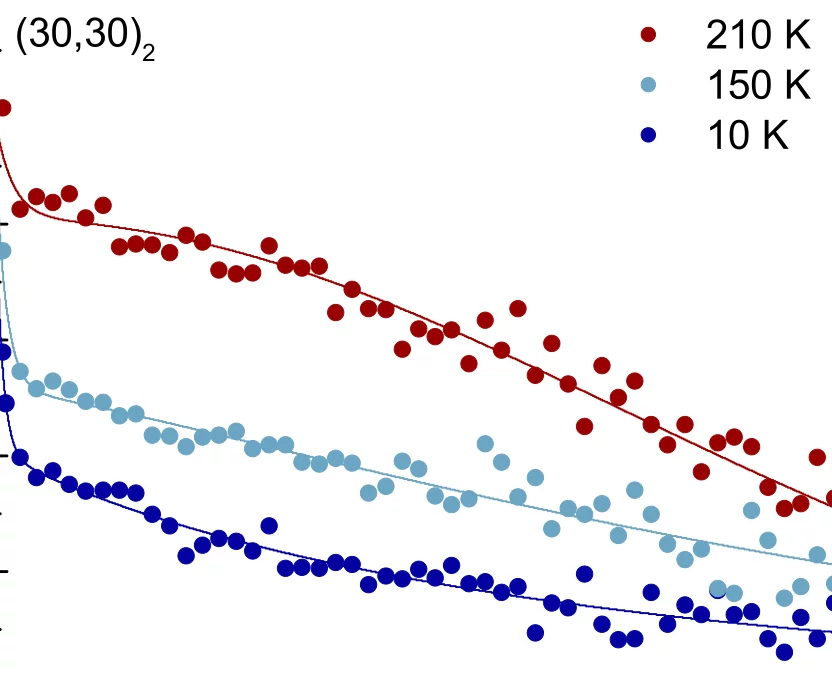In this paper we present a model system built out of artificially layered materials, allowing us to understand the interrelation of magnetic phases with the metallic-insulating phase at long length scales, and enabling new strategies for the design and control of materials in devices. The artificial model system consists of superlattices made of SmNiO3 and NdNiO3 layers, – two members of the fascinating rare earth nickelate family, having different metal-to-insulator and magnetic transition temperatures. By combining two complementary techniques—resonant elastic x-ray scattering and muon spin relaxation—we show how the magnetic order evolves, in this complex multicomponent system, as a function of temperature and superlattice periodicity.
We demonstrate that the length scale of the coupling between the antiferromagnetic and paramagnetic phases is longer than that of the electronic metal-insulator phase transition—despite being subsidiary to it. This can be explained via a Landau theory—where the bulk magnetic energy plus a gradient cost between magnetic and nonmagnetic phases is considered. These results provide a clear understanding of the coupling of magnetic transitions in systems sharing identical order parameters.
Facility: SμS
Reference: C. Domínguez et al, Physical Review Materials 7, 065002 (2023)
Read full article: here


